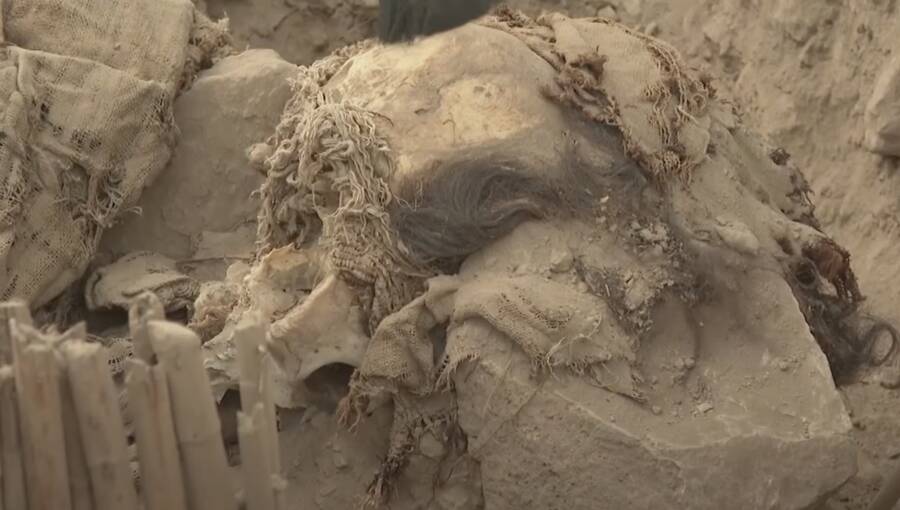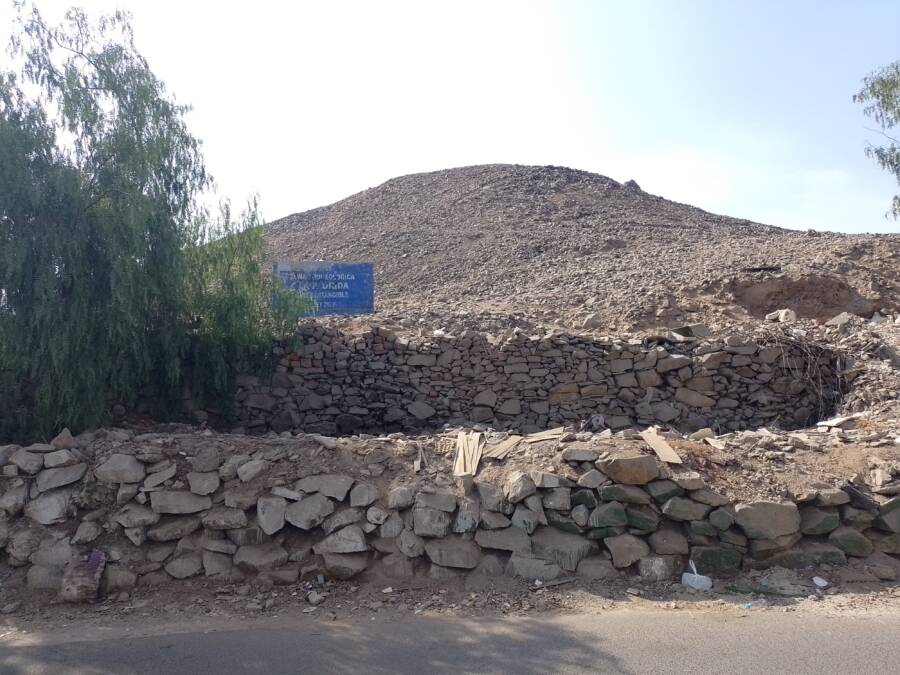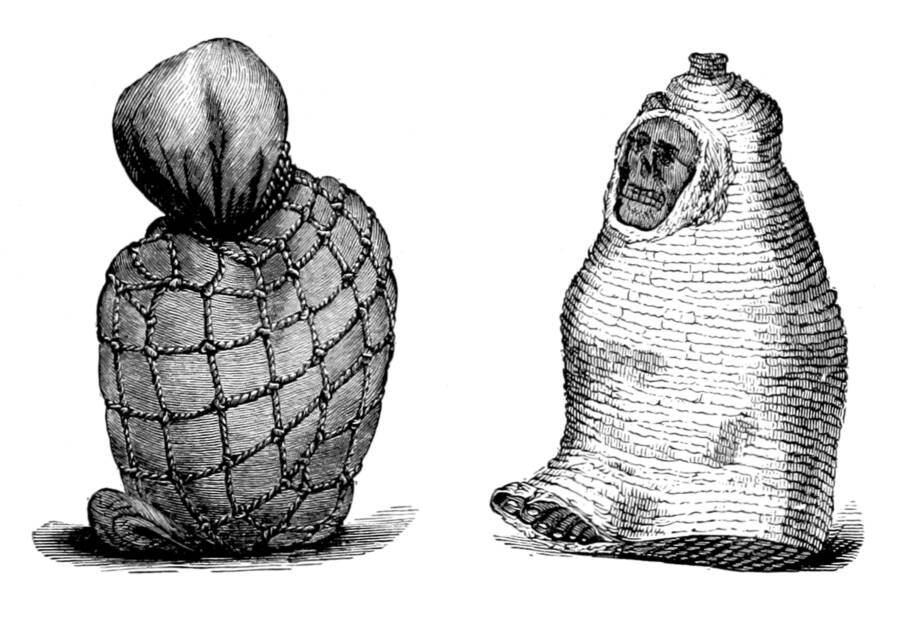The four child mummies were buried alongside one adult and several red ceramics.

YouTube / Associated PressThe mummies were likely buried 1,000 years ago, at the height of the Ychsma culture.
Archaeologists in Peru recently unearthed the mummified remains of four children in an ancient ceremonial space dating back at least 1,000 years.
The child mummies were found alongside one adult in one of modern-day Lima’s oldest neighborhoods. Based on the mummies’ age, researchers believe the children were part of the Pre-Incan Ychsma culture that once inhabited the central coast of Peru.
The Ychsma Kingdom, founded around 1100 C.E., once dominated most of the Lurín River valley. It had begun to expand into the Rímac River valley before it was eventually absorbed by the Inca Empire, which was spreading across the Andean region.
The burial site is known as the Huaca La Florida. Some of the newly discovered remains were found at the foot of a staircase leading up a small hill, which archaeologists believe was once the site of a hidden temple, built around 3,500 years ago.
“This whole area is a very important ceremonial chamber,” archaeologist Luis Takuda told Reuters. “The people who lived here during the Ychsma period still considered it a sacred space and therefore buried their dead here.”
Alongside the remains was an assortment of ceramics, Takuda said. Each of the mummies was found curled up in the fetal position and wrapped in bundles of vines. Even more amazing, however, was that some of the mummies’ skulls still had hair on them.

Wikimedia CommonsThe Huaca La Florida site in Lima, Peru.
This discovery comes just over two months after a similar discovery in the Miraflores district of Lima in September 2023.
As Smithsonian Magazine reported at the time, archaeologists had discovered another 1,000-year-old mummy with long brown hair fashioned in a distinctive style.
Like the newly found child mummies, this mummy was also once a part of the Ychsma culture, though its gender was unknown. Lead archaeologist on the dig, Mirella Ganoza, said at the time of the mummy’s hairstyle: “What looks like a braid could be a cord that held up their hairstyle.”
No other details about the hairstyle — including any cultural significance that style might hold — were revealed.
This mummy was also found buried alongside two ceramic vessels and several metal objects wrapped in a cloth, not dissimilar to the ceramics found at the new site. The body was positioned in a manner characteristic of Ychsma burials, with its legs bent and its feet crossed.
It was found buried beneath an adobe and clay pyramid known as the Huaca Pucllana, which researchers believe was built by the Lima culture around 500 C.E., though it held later significance to the Wari culture that followed around 700 C.E., and the Ychsma culture that succeeded them, using the site for a cemetery around 1000 C.E.

Science History Images / Alamy Stock PhotoThe traditional sitting posture of Ychsma burials.
According to Peru’s Ministry of Culture, there are more than 400 huacas — or sacred places — throughout Lima, making the city a hotbed of archaeological discoveries. It also paints a clear archaeological record of Peru’s history and the various cultures that once resided there.
Hector Walde, dean of the professional association of archaeologists in Peru, who was not involved in the Huaca La Florida project, told the Associated Press that many of these sacred spaces “were already ruins when they were reused as funerary spaces.”
It’s also important to note that while human sacrifices were common across pre-Hispanic cultures in the region, each of these recent discoveries are more indicative of normal burials, not sacrifices.
While Walde was not involved in the most recent discovery, he is the director of another project, the Garagay archaeological project, which is focused on a 3,500-year-old pre-Inca temple in the capital’s northern region.
That temple, unfortunately, wasn’t kept in such good condition, and Walde’s team had to spend months clearing the hill of roughly eight tons of garbage that had piled up.
The consequence of this, Walde said, is that these expansive urban sites sometimes “have occupied the boundaries of the huacas, they have suffocated them or they have cut them off.”
Still, if the new discovery is anything to go by, many of the numerous huacas in Lima still hold secrets yet to be uncovered.
After learning about these child mummies discovered in Peru, read about when archaeologists uncovered 42 skeletons of syphilis-ridden colonists underneath Peru’s oldest hospital. Then, read about the discovery of the 3,000-year-old tomb of a “Priest of Pacopampa.”





